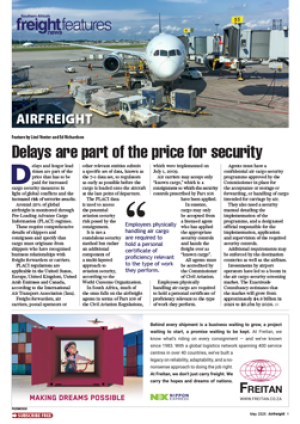It’s imperative for the Port of Durban to deepen its draught and berthing capacity if it wants to retain its position as South Africa’s most important entry point for containerised cargo, Transnet National Ports Authority (TNPA) has stressed. In an exclusive discussion with FTW, deputy harbour master Pinky Zungu remained calm and composed as she used hard facts to denounce private sector criticism that depth and quay upgrades were perhaps not necessary. These criticisms were ventilated late last year when it emerged that the associates who had been awarded a R3.5billion tender to upgrade Pier 2 of the port’s two container terminals were under suspicion for irregular business practices. Ongoing investigations effectively placed on hold at least 50% of a R7-billion upgrade project at the port. However, if this had in whatever way cast doubt on the need for crucial draught deepening and berth expansion, Zungu got straight to the point. “Let’s be clear: the berth
deepening is something that we live with every single day of our lives. “There is a lot that is said every day out there while we have to fight the fires within – and whether we like it or not, we’re going to have to do something about our lack of sufficient under-keel clearance.” She added that although the widening of the channel had eased matters for the port, “our berth pockets remain unchanged. “It means most vessels calling at out port are tidal vessels that have to wait for certain windows before they can be accommodated. And although many shipping lines have made peace with the fact that our draught is sitting at 12.8 metres and we have to wait for the tide to allow these vessels to enter at a depth of 13.5 metres, it often causes delays. “Moreover when the tide goes out and the underkeeling shrinks, the rudders and propellers of bigger vessels cause extensive damage to our harbour’s surface.” And although dredging is part of the port’s functioning responsibilities, silting up of the harbour and waves breaking right into the channel present it with constant additional
challenges that could be substantially relieved through draught and berthing upgrades. Shedding more light on Zungu’s sentiments, TNPA chief executive Shulami Qalinge explained in an official statement that deeper pockets at Pier 2’s 203, 204 and 205 berths “will enable the port to accommodate newer generation vessels by 2023”. She added that, “super post-Panamax vessels carrying 9200 TEUs and larger ships take up two berths on the North Quay, shrinking port capacity”, a constraint that in addition to tide-dependent dockings “results in vessel queues at outer anchorage”. Once the upgrades are completed, the existing quay will be 16.5m deep (an ideal international standard) and 1 210m long as opposed to the current 914-metre-long quay. It will allow for the berthing of three 350m-long post-Panamaxes. As for the cranes required for such extended capacity, the current 80-ton shipto-shore cranes would be modified to suit the profile of the new quay, Qalinge said. Wading into the conversation, Durban’s acting port manager Nokuzola Nkowane said it was a simple matter of necessity. “If we don’t upgrade we will lose some form of efficiency, and for a port that handles 65% of the country’s containerised cargo, expansion is a simple economies-of-scale issue.”
IMAGE WITH CAPTION: Super post-Panamax vessels carrying 9200 TEUs and larger ships take up two berths on the North Quay. – Shulami Qalinge

